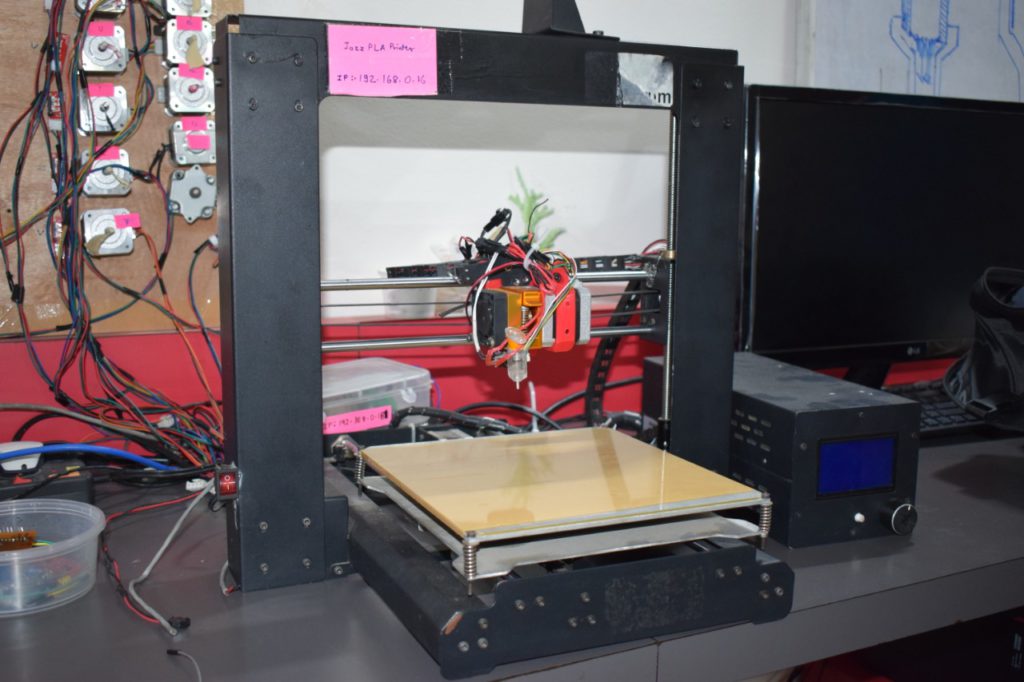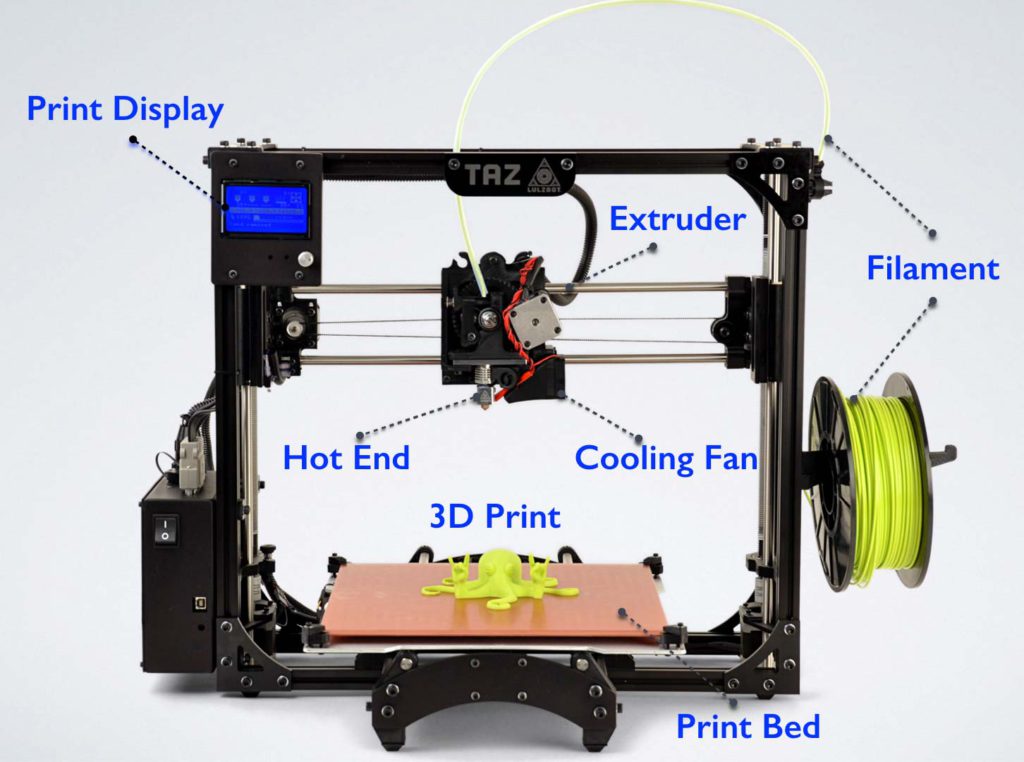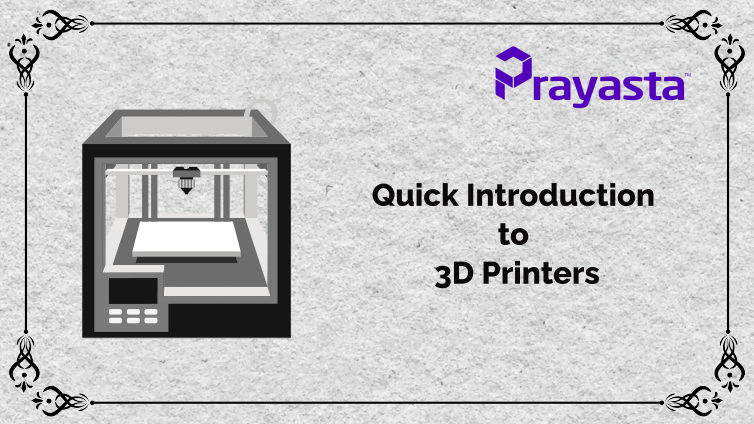A first time writer Saurabh Sakhare has shared a quick guide for 3d printers. Read the article to get an introduction to the world of 3D printers.
Hi, I also wanted to write a blog post so here I am with a Bang – My first blog post…. But on what topic should I write…?? Programming/Electronics? 3D-Printers ?? Yes. So, Let’s get started – 3D printers and it’s technical side.
BEWARE there will be mathematics, electronics and electrical too. As I was wondering after school where I’m going to use coordinate systems, functions and derivations, I found it – it’s in a 3D printer. So, as Prayasta 3D Inventions Pvt Ltd we are working on silicone 3D printing. Oh wait! Let me just introduce you a little about 3D printers.
So, in my first post I’ll cover introduction of 3D printers.
What is a 3D printer? How does it look right? How do 3D printers work? I will cover most of it. If you want to ask any question just leave a comment.
What is 3D-Printer?
3D printing, also known as additive manufacturing, is a manufacturing process where a 3D printer creates three-dimensional objects by depositing materials layer by layer in accordance to the object’s 3D digital model. Oh God! too many technical words, right? So let’s get it simple. We use printers to print an image of any object or data on paper. That’s a normal printer, say any HP/Epson printer everyone has seen but 3D printers are next level, it prints the whole 3D object of plastic/metal or any material we want. 3D printers are a new generation of machines that can make everyday things. They’re remarkable because they can produce different kinds of objects, in different materials, all from the same machine. A 3D printer can make pretty much anything from ceramic cups to plastic toys, metal machine parts, stoneware vases, fancy chocolate cakes or even (one day soon) human body parts.
How does it look?

PLA filament has gained wide acceptance within additive manufacturing partly because it is made from renewable products and also because of its mechanical properties. It is often the preferred choice for beginners in 3D printing as it is a very easy material to work with. This material, considered a semi-crystalline polymer, has a melting temperature of 180ºC, which starts melting between 200ºC and 260ºC.
Anatomy of 3D Printer.

How do 3D printers work?
You start by designing a 3D object on an ordinary home PC, connect it to a 3D printer, press ‘print’ and then sit back and watch. The process is a bit like making a loaf of sliced bread, but in reverse. Imagine baking each individual slice of bread and then gluing them together into a whole loaf (as opposed to making a whole loaf and then slicing it, like a baker does). That’s basically what a 3D printer does.
The 3D printing process turns a whole object into thousands of tiny little slices, then makes it from the bottom-up, slice by slice. Those tiny layers stick together to form a solid object. Each layer can be very complex, meaning 3D printers can create moving parts like hinges and wheels as part of the same object. You could print a whole bike – handlebars, saddle, frame, wheels, brakes, pedals and chain – ready assembled, without using any tools. It’s just a question of leaving gaps in the right places.
Type of 3D Printers
The picture above is of FFF/FDM(Fused Filament Fabrication) type printer works on Cartesian Coordinates System, There are several other type of printers like :-
- Stereolithography (SLA)
- Selective Laser Sintering (SLS)
- Fused Deposition Modeling (FDM/FFF)
- Digital Light Process (DLP)
- Multi Jet Fusion (MJF)
- PolyJet.
- Direct Metal Laser Sintering (DMLS)
- Electron Beam Melting (EBM)
Application of 3D Printers
1. Prototyping and Manufacturing
2. Education
3. Medicine
4. Construction
5. Art and Jewelry
In next post we’ll write more on what kind of software and hardware are needed to run the 3D printer.





